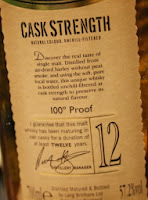At the turn of the year, many people offer their predictions for the year to come. At the beginning of this year, I did so too, although the results were, to say the least, mixed. Mind you, how many economists predicted the collapse in the oil price?
- Beer duty will rise by the rate of inflation. The duty escalator will continue to apply to all other drinks categories. Wrong – Osborne slightly cut beer duty, froze cider and spirits duty, and removed the escalator from all other drinks categories. A rare example of entirely positive news – cheers George!
- Craft keg ales will not make a significant breakthrough into mainstream pubs, but there will be a modest expansion of British-brewed “craft lager”. Again wrong – I’ve seen craft keg ales in pubco pubs in trendy locations such as Didsbury, and indeed New World Pale Ale in mainstream outlets with a Marston’s loan tie. Plus Spoons are now serving Devils Backbone. Still not seen in standard pubco houses, though.
- Beer sales in the on-trade will decline by about 5%, those in the off-trade by slightly less, but still showing a negative figure. Nope, on-trade sales fell by a mere 0.7%, with the off-trade rising by 3.6% and the overall figure rising by 1.4%. Surely a result of the two-year cut in beer duty.
- Overall per capita alcohol consumption will continue to fall. Indeed, and bears continued to shit in the woods.
- There will be more breweries in the UK at the end of the year than at the beginning. And there were. It must peak some time, but not yet, although there seem to be more grumbles from brewers about erosion of margins
- At least one popular beer brand currently sold at 4.8% ABV will have its strength reduced to 4.5%. “The taste will be unaffected”, its makers will claim. No – there have been numerous strength reductions, but the idea of draught Stella or whatever being cut is still to come. Indeed Tuborg in Spoons was restored to 4.6% from 4.0% following customer complaints.
- A prominent pub in the Stockport MBC area that nobody had imagined was vulnerable will close its doors for the last time. Not really so – the most prominent was the Adswood Hotel, which had been thought to be under threat for some time. We also lost the Tiviot and Imperial/Petersgate Tavern.
- Some bizarre concept of which I cannot even dream will become the “next big thing” amongst railway arch brewers and gushing bloggers will claim that “everyone is brewing XXXX”. Saison is so last year. So was it sour beer, or Gose?
- England will not progress beyond the quarter-finals of the World Cup (if that), thus denying a boost to the brewing industry and pub trade. That wasn’t exactly the most difficult prediction to make.
















